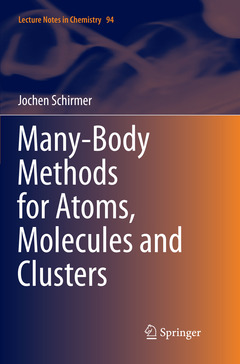Description
Many-Body Methods for Atoms, Molecules and Clusters, 1st ed. 2018
Lecture Notes in Chemistry Series, Vol. 94
Author: Schirmer Jochen
Language: English
Subjects for Many-Body Methods for Atoms, Molecules and Clusters:
Keywords
Many-body methods in quantum chemistry; Field-theoretical many-body methods; Electronic states and transitions in molecules; Feynman diagrams; Algebraic-diagrammatic construction (ADC); Fundamentals of many-body physics; Many-electron systems; Electron propagator; Diagrammatic perturbation theory; Green’s function; Goldstone diagrams; Dyson equation
Publication date: 12-2018
Support: Print on demand
Publication date: 11-2018
Support: Print on demand
Description
/li>Contents
/li>Biography
/li>Comment
/li>
Presents many-body theory using the language of quantum chemistry and molecular physics
Provides a concise, yet rigorous guide to many-body Green's functions, propagators, and Feynman diagrams
Bridges the gap between the genuine many-body and conventional wave-function-based methods




